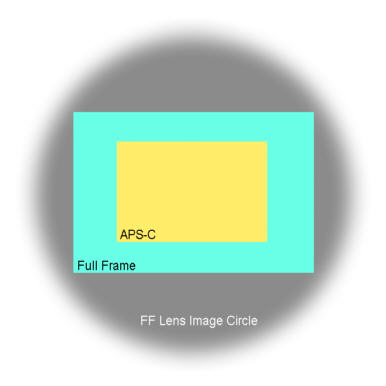If you are a canon user, you might have known about EF lenses and EF-S lenses. You might sometimes wonder what are the differences. There are also myths pertaining to that and I'm here to clear em out!
In my previous post on CROP (APS-C) vs FULL FRAME, we talked about the types of DSLR available.
Now it is the type of lenses that are used in both systems.
EF lenses are both compatible with Full Frame and APS-C cameras.
However. EF-S lenses are only compatible with APS-C cameras. Canon's lineup of lenses made for APS-C cameras would not fit full frame bodies due to the extra black ring at the bottom of the lens mount. EF lenses don't have that which is why it can be used on full frame (and APS-C, since the black ring is 'extra')
If you look closely in the pictire, there is a caved-in black ring inside the 7DmkII (an APS-C DSLR) while the 5DmkIII (Full frame DSLR) does not have that
(cred: http://i.ytimg.com/vi/NBp_2wRmtrQ/maxresdefault.jpg )

There are two differences to take note of:
1) The Extra Black Ring on top of the lens mount.
EF lenses do not have that as it is made to be used on Full Frame cameras which does not have the black ring. EF-S lenses on the other hand has that black ring.
(as seen here, the EF lens on the left doesn't have the black ring unlike the EF-S lens on the right)
(lenses used: EF 50mm f/1.8 STM on left & EF-S 18-135m f/3.5-5.6 IS STM on the right)





2) the mount labels.
mount labels.
In APS-C cameras there will be two 'labels' - A red dot and a white square box on the rim of the metallic mount on the DSLR.
In my previous post on CROP (APS-C) vs FULL FRAME, we talked about the types of DSLR available.
Now it is the type of lenses that are used in both systems.
EF lenses are both compatible with Full Frame and APS-C cameras.
However. EF-S lenses are only compatible with APS-C cameras. Canon's lineup of lenses made for APS-C cameras would not fit full frame bodies due to the extra black ring at the bottom of the lens mount. EF lenses don't have that which is why it can be used on full frame (and APS-C, since the black ring is 'extra')
If you look closely in the pictire, there is a caved-in black ring inside the 7DmkII (an APS-C DSLR) while the 5DmkIII (Full frame DSLR) does not have that
(cred: http://i.ytimg.com/vi/NBp_2wRmtrQ/maxresdefault.jpg )

There are two differences to take note of:
1) The Extra Black Ring on top of the lens mount.
EF lenses do not have that as it is made to be used on Full Frame cameras which does not have the black ring. EF-S lenses on the other hand has that black ring.
(as seen here, the EF lens on the left doesn't have the black ring unlike the EF-S lens on the right)
(lenses used: EF 50mm f/1.8 STM on left & EF-S 18-135m f/3.5-5.6 IS STM on the right)





2) the
 mount labels.
mount labels.In APS-C cameras there will be two 'labels' - A red dot and a white square box on the rim of the metallic mount on the DSLR.
Full Frame Cameras however only has a red dot.
By now you might have figured out that EF lenses are the ones with the red dot, while EF-S lenses is the one with the White box.
So now you might wonder why they even created EF-S lenses right? There's already EF lenses so why EF-S?
Back in the days, EF lenses were a bit expensive for normal people like you and me to buy. Since majority of camera users use APS-C sensor DSLR (since it is cheap and the best choice for beginners), Canon came up with the EF-S lens series - which is ONLY for APS-C and it is cheaper because it uses lesser amount of glass and optics to construct the lens.This is why normally in the market, the EF-S lenses are cheaper compared to EF lenses
(excluding EF 50mm f/1.8 STM which is really cheap and the EF-S 17-55mm f/2.8 lens)
Moreover EF-S lenses are created to 'somewhat match' the focal lengths on a full frame.
For example, using a Canon EF-S 10-18mm lens on an APS-C gives an equivalent Full Frame field of view of 16-28.8mm
This is almost similar to the field of view on a Full Frame using an EF 16-35mm f/2.8 IS USM II L lens ( although on APS-C it doesn't really cover until 35mm but close enough)
There are also rumours that the crop factor (in APS-C DSLR) only works if you use an EF lenses but using EF-S lenses negate the crop factor. This is highly inaccurate.
APS-C cameras will have the crop factor (1.5x for Nikon etc and 1.6x for Canon) BY DEFAULT for ANY lenses used on it.. So don't be tricked by this.
Well that comes to the end of my blog post! Please do give feedback on what to cover and how to improve this page! Your feedback is very much appreciated!





